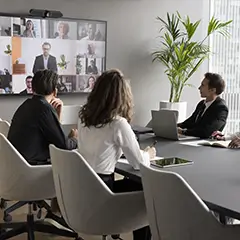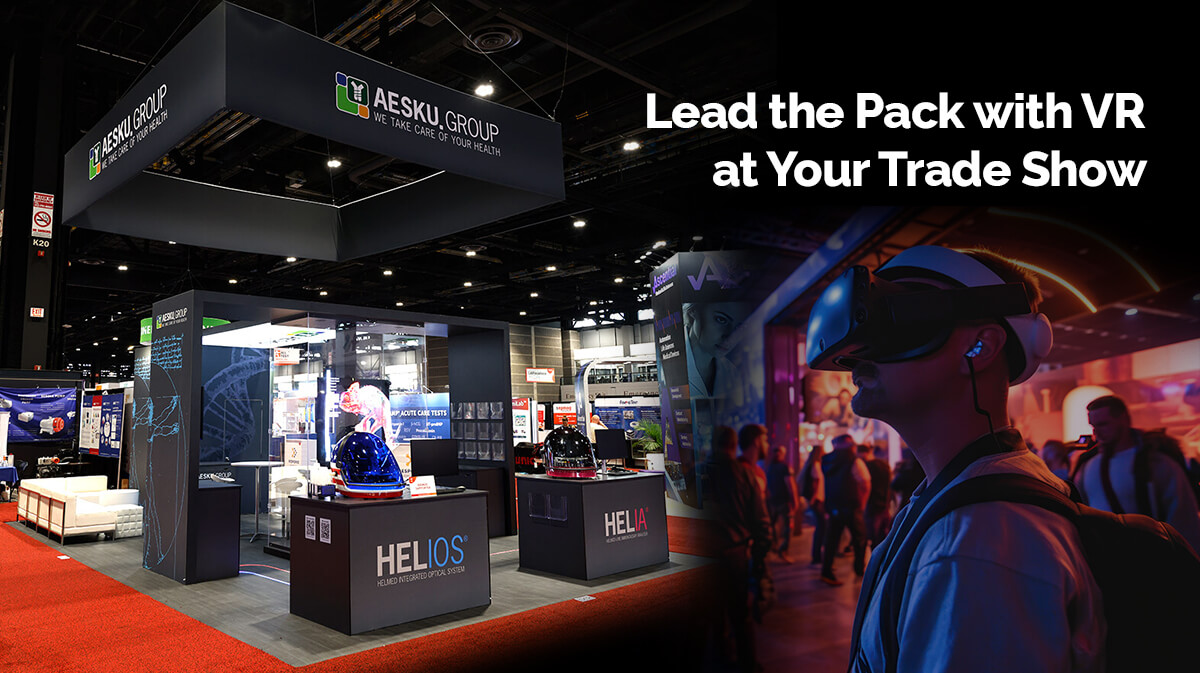
Use Virtual Reality to Uplift Visitor Experiences
Getting visitors to remember brand content that they have been exposed to at a trade show is an enormous challenge.
First, the human mind is engineered to wander and not sit still.
Second, with so many people moving around, talking and activity in the background, the sense of commotion that visitors feel is inevitable.
Third, standardized trade show booth ideas of deploying conventional means to distribute brand content enhances the clutter effect and renders brand messaging ineffective.
 Cognitive Incapacities of Visitors at Trade Shows to Retain Brand Content in their Memories
Cognitive Incapacities of Visitors at Trade Shows to Retain Brand Content in their Memories
The point is that visitors see, hear and talk about brand content of physical products and environments but scatter their attention among discrete and fragmented objects of attention and in the process develop amnesia.
From the perspective of exhibitors and salespersons of brands participating in trade shows, amnesia or the incapacity of the visitors to retain brand content in their minds translates into the following challenges:
- lost opportunities of lead generation
- lost opportunities of sales
- lost opportunities of referrals and recommendations
- lost queries from visitors
At the root of the amnesia of visitors attending trade shows and the consequent loss of value creation opportunities is the lack of “user experience”.
As long as visitors are not transformed into users, cognitive incapacities to hold brand content in the memory shall continue to hurt brand exhibitors.
Virtual Reality and the Symbolic Systems of User Experience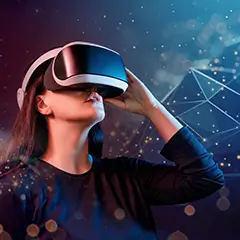
Enabling visitors to get access to user experience is about empowering them with custom exhibit booths that allow them to zero down the gap between merely having access to brand content and getting a hands-on experience of the product or service. It is in this context that the virtual reality can make a difference.
The deployment of virtual reality tech platforms allows users to switch over from the physical environment to a digital environment and allows them to laser focus solely on the experience of the product or service by completely eliminating the noise and commotion in the background.
A virtual reality integrated trade show booth rental gives visitors the incentive of going through the experience of owning the product or service and driving its use in multiple scenarios in a digital world, thereby bringing them psychologically closer to the brand and in the process upgrading them into users, albeit for a short window of time.
Factors to Consider While Deploying Virtual Reality in Booth Rentals
Beyond doubt, the deployment of virtual reality can be one of the best trade show booth ideas for exhibitors for augmenting user experience.
In order to deploy virtual reality at a trade show booth rental and create value out of it, it is recommended that brand exhibitors consider the following guidelines:
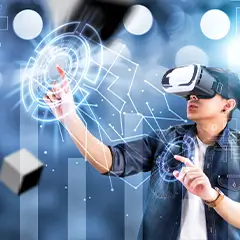 1. Keep the VR Show Under 5 Minutes
1. Keep the VR Show Under 5 Minutes
The objective behind deploying virtual reality is to build traffic into the trade show booth, engage the visitors and offer them an interactive environment.
It is suggested that the duration of the virtual reality show be kept under five minutes and the show timings be announced to visitors through digital signage at the venue and periodic updates on social media platforms of the brand.
Doing this shall enable the booth staffers to plan the floor space, schedule activities and reserve time for following up on the queries that visitors may have at the end of each show.
2. Pick Your Trade Show Booth Designer
Deploying virtual reality calls for expert level consulting on planning the layout, analyzing the floor plan, designing the built area for VR deployment and creating a physical environment that synchronizes with the simulation of the tech platform.
Pick a trade show booth rental designer that has exposure to and experience in designing such VR enabled custom exhibit booths.
3. Consider Renting
VR tech platforms and gadgets are expensive and need efficient handling and logistical support.
It is advisable to consider renting the VR tech deliverables from a vendor after conducting an extensive market research.
4. Consider All Senses Including Sound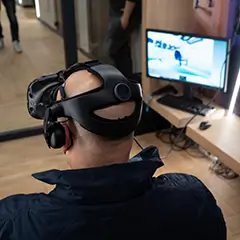
VR is not only about a simulation video but as much about the audio. Do not compromise on the sound component of the user experience.
Get the trade show booth designer to engineer the trade show booth to offer the most optimum sound quality to the visitors.
5. Offer Seating to the Visitors
It is supposed to be a VR show. Given the limited floor area of the booth, draw the layout to offer seating to both the user and the rest of the visitors.
Arrange for seating and allow the visitors to settle down in the audience at the trade show booth and absorb the experience of the user. Add an extra monitor or TV to show people what the user is experiencing.
6. Host Hangouts with Employees
Given that trade shows present great opportunities for exhibitors to expand their outreach and zero down the gap with visitors in every possible way, it is possible to host hangout sessions with back-office employees in a simulated scenario by deploying VR.
This can allow visitors to engage with the people behind the brand and get a transparent insight into the corporate culture that goes into the making of the brand.
7. Engage with Remote Attendees via a VR experience
Yet another innovation that can be put to practice with the deployment of VR is enabling remote visitors to attend the trade show.
While all people may not be able to make it to the main event, a complete integration of VR across the trade show booth can be undertaken to transmit a VR enabled video of the proceedings to remote attendees on the brand’s website or live social media feed.
This can be particularly productive for public relation exercises, media engagements, increasing website traffic for lead generation and synchronizing leads obtained from the traffic across the web and the trade show.
Trade show booth ideas that augment experiential learning of visitors are the best means to resolving challenges of brand amnesia.
By enabling visitors to transcend the boundaries of physical environments and cross over into a digital environment powered by virtual reality, exhibitors can offer them that, which is missing in the former- a user experience. People forget what they read, hear and watch, but not what they experience.
